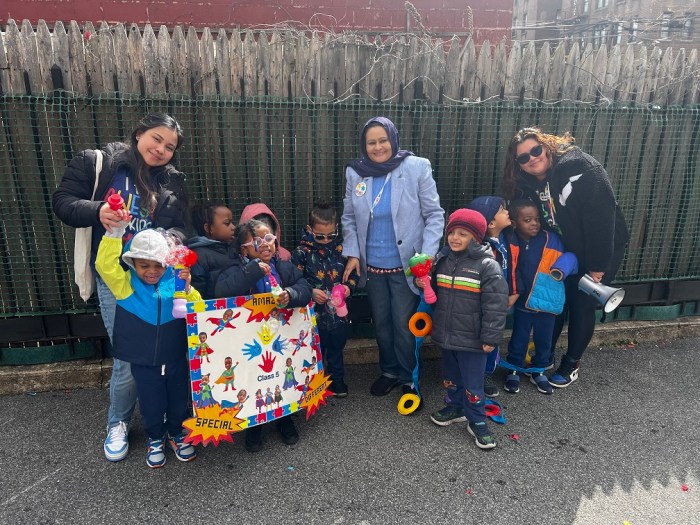It was a college dormitory, home to students from Adelphi, Brooklyn College and NYU. Before that it was an assisted-living facility.
But 385 McDonald Ave. was a vacant property partially hidden by trees for more than a year — until yesterday, when it opened as a homeless shelter for families with children.
The transformation to a shelter was a quick one: the city’s Department of Homeless Services announced the shelter’s location just before Thanksgiving, surprising many in the neighborhood.
Birth of a shelter
More than 57,000 people sleep in shelters citywide. New York’s right-to-shelter mandate guarantees people a place to sleep — but right now there isn’t enough space.
Under these circumstances, when shelter vacancy drops under a certain percentage, the Department of Homeless services forgoes the normal procurement process for creating new shelters and puts up emergency temporary space, pending a review.
This is how the shelter came to Kensington, a quiet and diverse neighborhood home to Bengali, Mexican, Pakistani and Hasidic Jewish enclaves. Residents say homeless people in the neighborhood are rare.
Some in Kensington originally reacted negatively, particularly given the sensation that the shelter was a done deal.
A bustling elementary school across the way also gave pause to some who worried about overcrowding and who might be joining their community.
Withstanding a crisis
This summer all eyes were on a homeless situation that Mayor Bill de Blasio seemed to be saying wasn’t getting worse, even as he prepared an affordable housing program to remedy it.
Part of the problem is that there are two segments of the homeless population with often divergent needs: the shelter dwellers who are without housing and are served by the city’s shelter system until they, hopefully, can move on to something more permanent. And the unsheltered: the street homeless. The number of unsheltered individuals is harder to determine — at this time the city relies on a once-yearly nighttime count performed by volunteers. It is the street homeless who are often the most visible.
It is this image of a homeless individual — street sleeping, sometimes mentally ill, hardened, disheveled, often male — that many communities are concerned about when a homeless shelter is opening down the street, even when that’s not the population meant to be served, as in Kensington. Even the specter of that segment of the homeless population arriving can make communities nervous. Of course, this is also the population that needs the most help, particularly when cold weather arrives.
Can we change the status quo?
The Kensington shelter will house families with children, forced out of their homes for one reason or another and faced with nowhere to go. Now, they’ll have rooms of their own. Contractors are still at work finishing kitchens and other improvements to the freshly painted building, with wide windows, airy spaces, small balconies facing the Foodtown across the street.
Many in the community have come around to their new neighbors, placed there with local input or not. Some have taken up a collection for items such as diapers and sheets.
“It’s just families,” says Jon Brause, 41, a financial professional who lives near the shelter. While he thought it might change the dynamic of the neighborhood, he noted that other things have changed it, too, such as the influx of movie crews. “It’s a diverse community. This just adds to the diversity.”
“Let them have shelter,” says Joseph Dbet, who works across the street. He shrugs his shoulders. “Why not.”
This is amExpress, the conversation starter for New Yorkers.

















